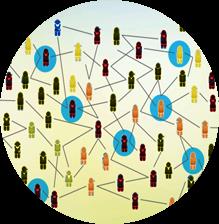What You Don't Know Will Cost You: Analytics Enrichment to Manage and Grow Revenue
By: Matti Aksela, Malla Poikela, Nancee Ruzicka

Mediation is a source of an immense amount of useful data that is no longer exclusive to billing. Numerous critical operational processes and systems rely on crucial event data captured from the network, but external data representations (XDRs) alone cannot paint a complete picture of customer experience, nor can they protect revenue and reduce risk. As complex as converged services and usage transactions are, without an infusion of customer data and interactions, operators see only part of the picture.
Is Big Data relevant to your business strategy?
You can’t go far in the telecommunications industry —or nearly any other industry, for that matter—without hearing about the importance of Big Data. With voice and text revenues declining, the art of applying analytics to customer data has moved into the spotlight. By monitoring how consumers are using data, communications service providers (CSPs) hope to discover new revenue streams and create more personalized marketing offers.
Big Data can be a big mess
The emphasis on Big Data has inspired a lot of CSPs to pay closer attention to what their customers are actually doing. But without a way to automate interactions and create an operational analytics program that automatically learns and adapts to use cases over time, Big Data can create more work than it’s worth. No CMO wants to sit in front of his or her computer sorting through 100,000 different customer profiles and try to manually predict which customers will “top up” to watch a video on their phones, then try to figure out which marketing campaign will be most effective.
That’s why, in its raw form, it’s hard to make Big Data relevant for any business strategy. The information is simply too diverse and disorganized to use, and not every solution fits the bill. In a research report published earlier this year, Accenture noted that 93 percent of the operators it surveyed said they needed new or improved products to help with analytics. With so many CSPs saying they need better tools, it’s no wonder they’ve been disappointed with Big Data so far—if you can’t properly sort and operationalize you company's data, then it will never be useful for building better relationships with your customers.One key aspect to utilizing the data is to make sure it’s available in a timely manner. Although data doesn’t really have an expiration date, expecting to get the same usable value from it after waiting several months to analyze it just isn’t realistic— but purely focusing on the event at hand isn’t the solution, either. Creating an individual profile from a customer's data and combining it with the true context of the customer is key, as is the importance of combining streaming real-time data with traditional, slower-moving data sources.
The future of marketing is networks, and the future of networks is marketing
Big Data is also about breaking down silos. Rather than treating your network as one pillar of your business and your customers as the other, analytics is applied to data throughout the business; by bridging silos acrossthe organization, CSPs can create a better end-to-end user experience. And because of the vast volumes and huge dimensionality of this data, the way to build bridges efficiently is through machine learning and predictive modeling, not time-consuming efforts to work within the scope of humanly manageable data.





















